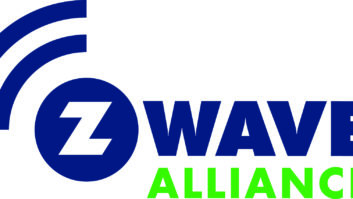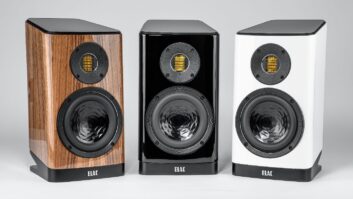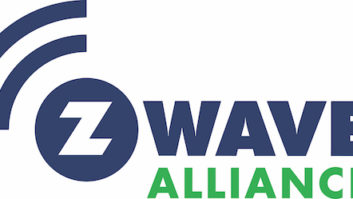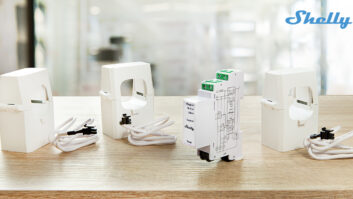by Lindsey Adler
Once again, I’m faced with the daunting task of writing up a recap of my day at CES after a whirlwind of meetings spanning three hotels and all three halls of the Las Vegas Convention Center. I’m tired just from writing that!
One of my first meetings was with THX—technology I’ve written about before, but this was my first opportunity to see it in action. There is a rather dizzying degree of metadata that THX brings to consumers. The company has several new products coming out this year, including a projector from Epson, and it continues to engage in active discussions with all the major movie studios to bring us more content the way directors intended us to see it.
I stopped by Somfy’s booth for a quick tour after hearing about its shade-operating motors and TaHomA whole-home automation system that works with Z-Wave technology. The interface was really seamless looking with either scenes or room automation options. A scene, for example, is morning, evening, or away—times of days or scenarios when you want your lighting or shading to be a certain way—but you can also do scenes in specific rooms. Users can control the system via an iOS app, and Android will be compatible in the first quarter of 2012. Somfy was also introducing network cameras.
SIM2 was showcasing the M150 DLP projector that targets lifestyle applications. This idea seeks to expand traditional projector use beyond a single application in an installation, so the projector is intended to show pictures or decorative art on the walls and otherwise be a “window to your lifestyle,” Alberto Fabiano told me. Features include 1,100-lumen brightness, 3D, liquid cooling, and 30,000 hours of continuous runtime.
Atlona introduced a range of cords, representing an investment in the retail world, although all the cords will be offered to dealers as well. The LinkCast wireless HD AV systems transmit 1080p video up to 45 feet, and extend beyond that in lower resolution. Several models are available in the good, better, best range to suit various consumers. They include both active and passive cable technology. LinkCast allows users to wirelessly play video games, for example, from a pretty significant distance from the unit. Atlona has a DLNA device coming later in the Spring.
The Z-Wave Alliance is one of several wireless technology consortia at CES. The wireless home control protocol emphasizes interoperability between varying devices and is currently focusing on a smart energy initiative, as well as targeting the “aging independently or home healthcare demographic.” Although the alliance doesn’t limit itself to one market vertical, helping keep the aging population in their homes longer is a definite trend that the alliance is paying close attention to. This isn’t specifically in the areas of monitoring blood pressure and weight, but more basic health needs that are less obvious, like controlling lighting, window movement, and locks. With a great deal of manufacturers onboard producing technology under the standard, the alliance is attempting to help manufacturers develop both awareness and standards that are lacking, according to Mark Walters, Z-Wave Alliance chairman.
Z-Wave Alliance technology, I learned, is licensed by Sigma Designs, which produces the radio that results in the protocol. The alliance is focused on promoting the interoperability of all the products. Z-Wave and Sigma Designs are actually competitors with MoCA, I learned, which is a similar technology I also learned more about today.
MoCA provides an alternative to having Ethernet, using a coax cable instead. All major set-top box manufacturers in the U.S. license MoCA technology, except those of you with AT&T U-Verse. MoCA introduced broadband access solutions that can be used in hotels, because they cover more zones than the original MoCA network did.
OmniMount continues to develop new technologies since merging with Ergotron, a fairly similar mount manufacturer. Omnimount’s parent company Nortek purchased Ergotron last December, and the two brands share a fair amount of overlap in products and technology, so this seems like a natural fit that has been in the works for sometime, but was officially announced at CES.
I also caught up with the HDBaseT Alliance folks who helped explain how its technology enables a single LAN cable to replace multiple cables and connectors in the home entertainment and business environment. Valens Semiconductor licenses its technology into many major manufacturers’ components. The alliance expects hundreds of vendors will be selling the chips by 2012.
At Texas Instruments/DLP, the focus was clearly on mobile solutions. There was a cool iPhone doc that, once “clicked in” has a small projector at the end for sharing personal videos and other material when necessary. Most of the other products TI/DLP had on display were mobile projection products, appealing to the consumer that wants to share content from a mobile device projected in some larger capacity.
BenQ displayed some of these portable projection solutions from DLP, as well as other gaming solutions. A 3D gaming display featured faster response time and “black-level equalizer” that helped gamers see figures in shadows more clearly. There was also the W7000 flagship projector for home theater systems. The W7000 is geared toward 3D gaming applications, and the company has expanded its line of home theater-specific projectors.




